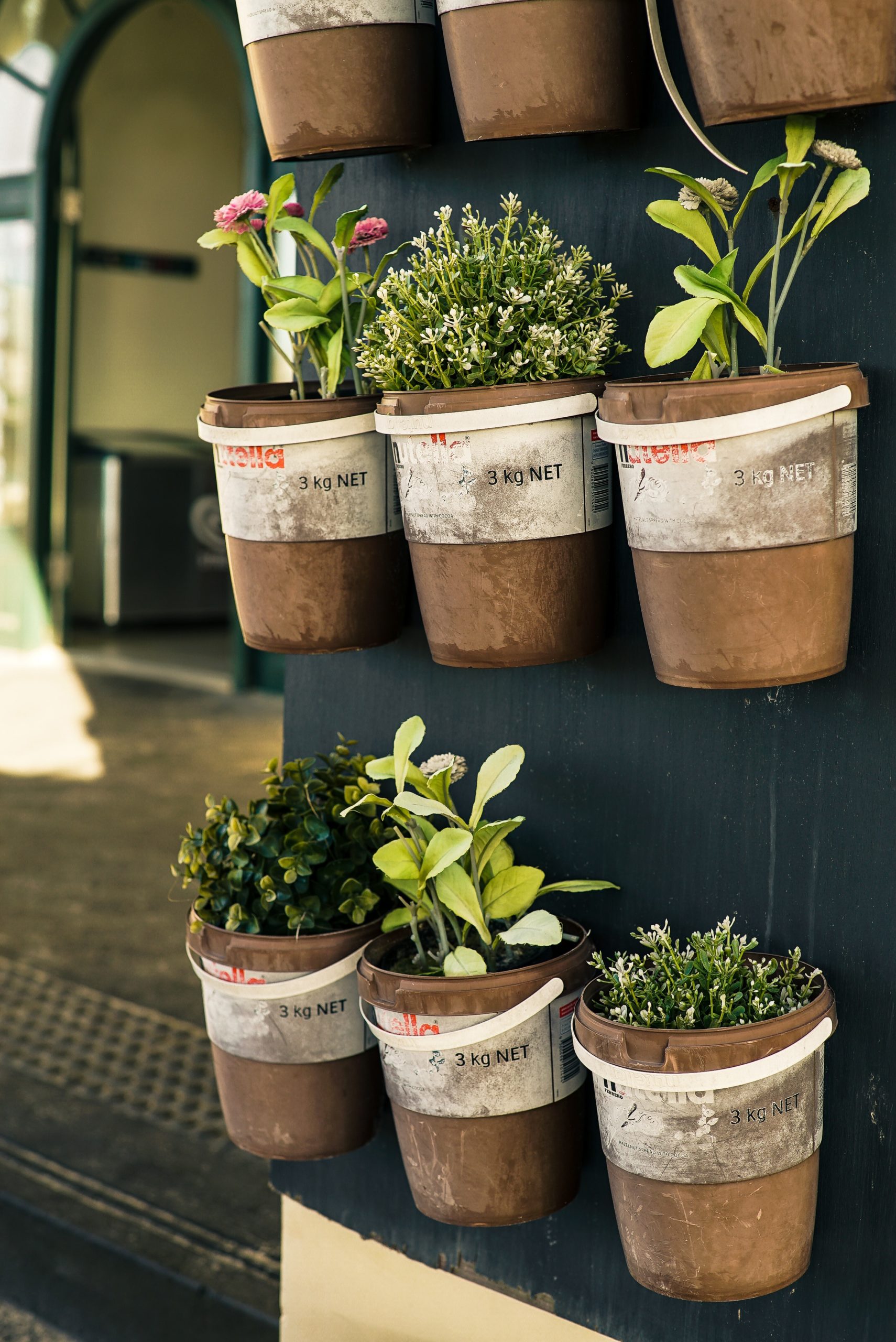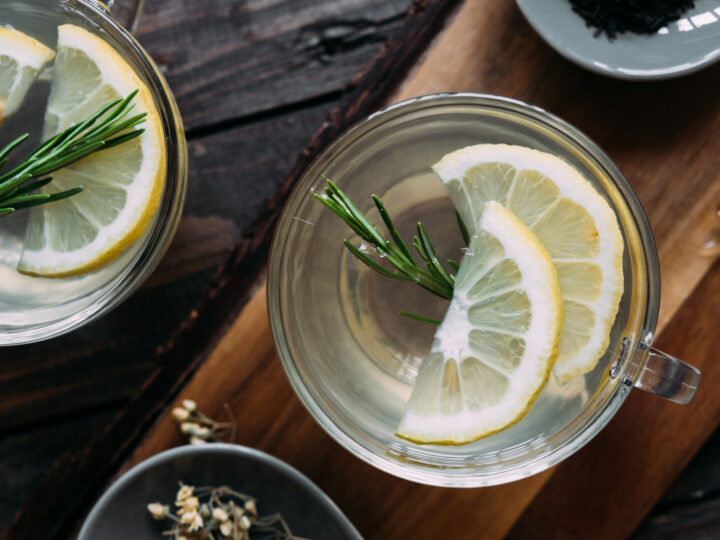HERBS (ALMOST) ANYONE CAN GROW AT HOME
And Tips To Keep Them Alive

Herb treatments are one of the core pillars of Traditional Chinese Medicine (TCM) and have been used for centuries to treat disease and chronic conditions ranging from heart conditions and blood pressure to mental health or the common cold. TCM practitioners will often suggest patients add certain herbal teas, tinctures, or supplements to their diet to help improve overall health.
Despite the official-sounding names, you can actually grow many medicinal herbs used in TCM treatments fairly easily in your own home. Even if you killed every chia pet you ever had as a kid, it’s worth giving these hardy herbs a shot. After all, you are a grown up now. We have faith in you. Learn the best tips and tricks for creating your own medicinal herb garden for plants like chrysanthemum, elderberry, echinacea, and St. John’s wort.
Chrysanthemum

Looking for a bright and cheery flower to add some color to your home? Chrysanthemums are similar to sunflowers but come with the added perk of many medicinal benefits!
What is Chrysanthemum Used For?
This herb is packed full of useful nutrients such as amino acids, vitamins, and minerals. Vitamins A, K and B6 along with riboflavin, calcium, and iron are a few standouts. In TCM, chrysanthemum has been used to help those suffering from many different ailments including the common cold, fevers, sore throats, the flu, chest pains, inflammation, high blood pressure, acne, and more. It is also said to act as an anti-aging solution and often recommended alongside green tea for use in beauty treatments.
It’s important to note that when brewing tea from chrysanthemum, you’ll use the dried flowers themselves rather than the leaves. Pour hot water over the dried flowers for tea, or create a compress using the soaked petals afterwards. Feel free to add goji berries, honey, or lemon for added flavor and healing properties.
Tips for Growing Chrysanthemum
Chrysanthemum is known to thrive as both an outdoor or indoor plant. If you’re growing your chrysanthemum plant from seeds, be sure to keep them indoors for about six to eight weeks before moving them outside. This plant enjoys a lot of sun and soil that is on the sandy side. If your plant sprouted just after the last cold days of winter, it should be ready to be used by the following autumn. You can pluck the flowers individually or cut full stems to then dry and use for teas and tinctures.
Elderberry (Jei Gu Mu)

Elderberry (Jei Gu Mu) offers both light pink and cream colored flowers along with the classic dark purple berries. But be wary, it’s not nearly as sweet as it’s counterparts in the berry family.
What is Elderberry (Jei Gu Mu) Used For?
This herb has been praised for its ability to fight colds and flus for hundreds of years so much that even the Western medicine camp is onboard. A 2016 study showed that the length of colds and related symptoms were significantly reduced when patients took elderberry (Jei Gu Mu) extract. Specifically, people like to use the plant to treat coughs and sore throats. There are many ways to use elderberry (Jei Gu Mu); brew it as a tea, add it to meals or smoothies, or turn it into a syrup. If you’d like to make your own cough syrup using elderberry (Jei Gu Mu), be sure to add other beneficial (and flavorful) additions such as cinnamon, honey, ginger, or cloves.
Tips for Growing Elderberry (Jei Gu Mu)
Elderberry (Jei Gu Mu) grows best in partial, or light sunlight and moist, well-fertilized soil. For the first year, be sure that your plant is watered consistently and thoroughly. This shrub can grow to be quite large if left unkempt – some bushes in the wild reach 10 to 15 feet in height. The flowers should be ready for use in the springtime while you’ll want to wait on the berries until summer.
Elderberry (Jei Gu Mu) is an excellent herb to have on hand in your home, as it’s not commonly found at local grocers. If you don’t grow your own, you’ll likely have to visit a plant nursery to find them. It’s important to note that not all kinds of elderberry (Jei Gu Mu) are created equal. Be sure to avoid red elderberry as they are considered poisonous plants and will result in stomach pain if ingested.
Echinacea (Zi Zhu Hua)

This medicinal herb is a beautiful pinkish-purple flower that has been celebrated for its healing properties for centuries but has only recently become widely used. It’s another great option for a medicinal herb that doubles as a beautiful decorative plant.
What is Echinacea (Zi Zhu Hua) Used For?
Beyond its colorful petals, echinacea (Zi Zhu Hua) is known as one of the best natural treatments for colds, flus, and general strengthening of the immune system. Echinacea angustifolia’s (Zi Zhu Hua) medicinal benefits can unfortunately only be found in its roots, so it’s necessary to dig up the entire plant to harvest. However, echinacea purpuprea’s seed heads and flowers can be used medicinally. Once echinacea (Zi Zhu Hua) roots have been harvested, they can be ground up and used as desired. You can take this herb as a tea, tincture, or supplement. When making tea with echinacea (Zi Zhu Hua), feel free to add in other herbs and flavors like honey, lemon, or goji berries.
Tips for Growing Echinacea (Zi Zhu Hua)
Echinacea (Zi Zhu Hua) thrives when given full sun for 5 or 6 hours per day and planted in soil that is moderate in nature. While it can survive in rocky and dry soil it won’t last in overly wet and dense soil. A relatively easy plant to maintain long-term, after reaching maturity, echinacea only needs to be watered periodically. Plan for once every three or four weeks and adjust the watering schedule as needed. This herb can grow to be about two feet tall at full height.
St. John’s Wort (Guan Ye Lian Qiao)

Don’t worry, this medicinal herb actually has very little to do with warts. St. John’s Wort, or Guan Ye Lian Qiao in Chinese, is a tall, lush plant known for its vibrant yellow blooms.
What is St. John’s Wort (Guan Ye Lian Qiao) Used For?
St. John’s Wort (Guan Ye Lian Qiao), also known as hypericum perforatum, has been traditionally used for its ability to ease nerve pain. However, in modern times it is marketed to treat the symptoms of depression, anxiety, and other mental health or mood concerns. Other uses of this herb include aid for menstrual pains, menopause, seasonal affective disorder, and as an aid to stop smoking. As a topical treatment, St. John’s Wort (Guan Ye Lian Qiao) has been used to treat eczema, and hemorrhoids. This herb is actually so effective at treating eczema, that studies have shown that in many cases it’s a better option than the options Western medicine is able to provide.
When the flowers have reached maturity in the summer, they can be harvested and dried to be used to brew into teas for consumption. To make a tincture, add high proof alcohol before drying the flowering tops. When creating creams and lotions from St. John’s Wort (Guan Ye Lian Qiao), be sure to grind the flowers into a fine powder or paste before combining with other ingredients to get the full benefits.
Tips for Growing St. John’s Wort (Guan Ye Lian Qiao)
The best method for growing St. John’s Wort (Guan Ye Lian Qiao) is keeping it in an area with full sun and in moist soil that is well-draining. St. John’s Wort (Guan Ye Lian Qiao) is fairly adaptable and can grow well in nearly any soil as long as it’s not too wet. Watering for this plant should occur every few days, to keep soil lightly moist. At full maturity, this plant will grow to around two feet tall.
Tips for Growing Herbs at Home
Want to grow your own herbs at home but not confident that you have a green thumb? While there definitely is an element of trial and error when it comes to learning about the care and keeping of plants, there are a few simple tips to maximize success.
- Pick a Good Container Make sure you’re aware of the depth of the roots and breadth the plant tends to spread before beginning the planting process. This information should be used to help you select a container that is the ideal size for your herbs. As a general rule, containers for plants should have holes on the bottom to allow for water drainage. Be sure to get a tray for under the pot to catch any excess water!
- Use the Right Soil Just like people have different favorite foods, many plants have preferred soil to be planted in. Some herbs prefer light, dry, and sandy soil while others crave moist, dark, and dense soil. Other plants have a wide range of acceptable soils but certain ones that will almost guarantee an unhealthy herb. Make sure you research the best type of soil for your herb before planting and maintain a consistent soil type if transplanting to a different location.
- Monitor Sunlight Just like with soil types, all plants have different levels of sunlight that are more or less ideal. Some herbs thrive in all-day sunshine while others would wilt and die in the same conditions. Certain plants may require you to move them in and out of the sunlight throughout the day or week. Be sure to have an understanding of the amount of sunlight your herb garden requires in advance, so you can find the perfect place in your home.
- Avoid Overwatering One of the easiest ways to run into trouble when caring for plants is overwatering them. While you might think that the herb garden is due for a drink each day, not all plants require that much water. Some plants like to be watered daily while others can go for weeks without needing hydration. Luckily there are several products available that will automatically water your plants on the schedule you determine, or small glass funnels you can place in the soil that release water slowly over several days or weeks.
- Don’t Over-Harvest When using herbs for medicinal practices, it can be confusing to know how much of the plant to harvest. As a general rule, it’s best to only remove up to one quarter of a plant at a time to prevent long-term damage or risk to the rest of the plant. Some plants that require use of the roots may have a more challenging harvest process. Do your research and consider taking a gardening class at a local greenhouse for more information on your specific plants.
Keeping a medicinal herb garden is sure to expand your list of at-home remedies. What are your favorite herbs to keep on hand in your home-garden?
Newer
11 Natural Methods To Boost Your Immune System
Older
Beyond Packing: Prep For Travel From The Inside Out
Comments (0)
Leave a reply
You must be logged in to post a comment.




